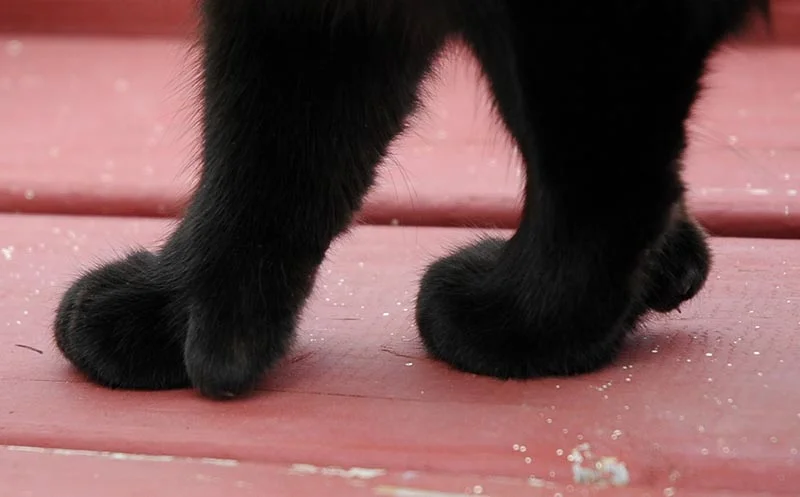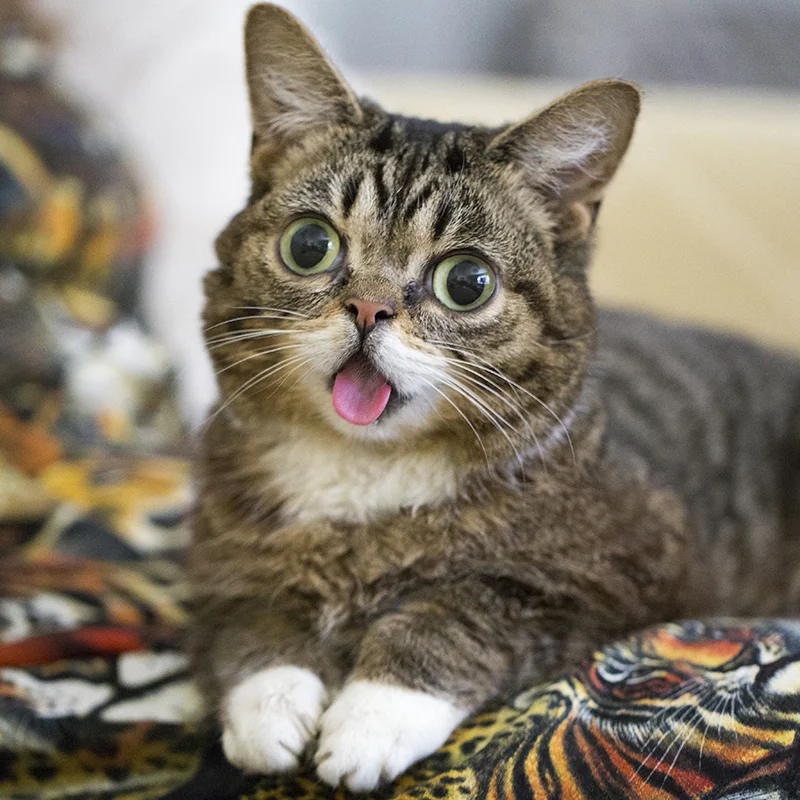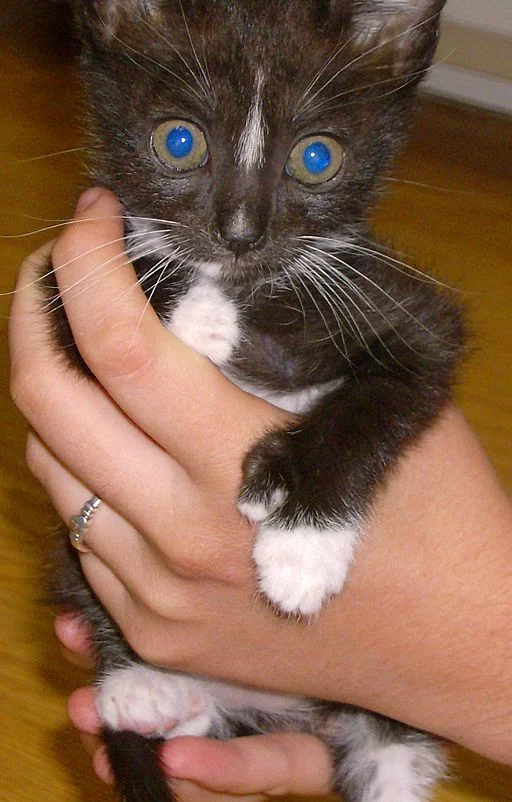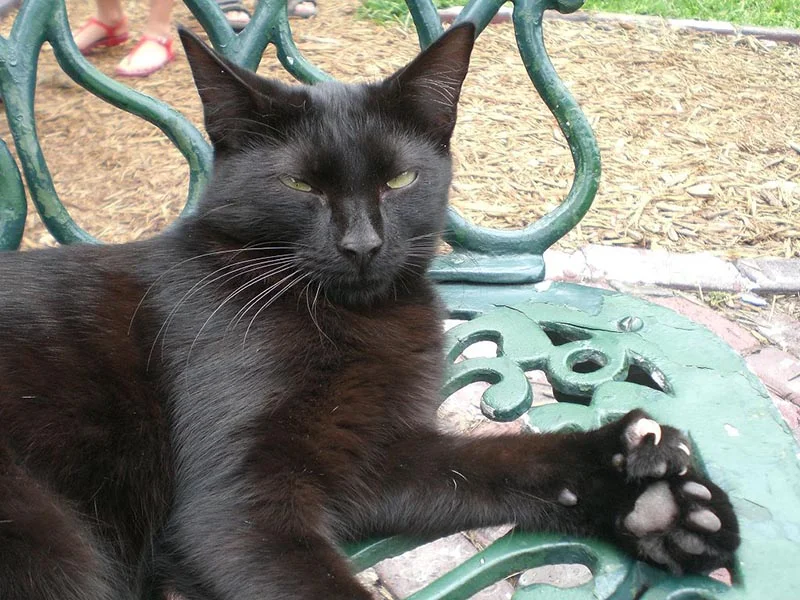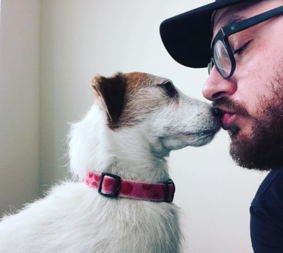Extra Toes Have Made These Cats Famous
A rare birth defect known as polydactylism leads to additional digits on felines’ paws that help them hunt, jump, and win our adoration.
By Jessie Schiewe
Humans go ga-ga for cats with extra toes. (Photo: Flicker / @eva101)
When Mike Bridavsky, sent a blood sample to a team of researchers studying bone disorders and limb malformations, he was excited. It was not his own plasma he was sending but rather that of his internet-famous cat, Lil Bub.
“I personally was convinced that they would find that her DNA was not from our planet, which is what I was hoping for, or there was some crazy prehistoric DNA — that she was part dinosaur,” Lil Bub’s owner told the Washington Post. “She’s quite literally one in infinity, you could say, as far as a genetic anomaly.”
And Lil Bub — who passed away in December of 2019, but who has millions of online followers, as well as an album, a book, a talk show, and a documentary film about herself — did have a unique look.
Even though she was full-grown, she was still kitten-sized and weighed only four pounds. Her saucer-sized green eyes bulged from her tiny head and the tip of her pink tongue hung eternally out of her mouth because she never developed teeth.
Lil Bub’s adorableness is hard to argue with. (Photo: Lil Bub)
Through the blood sequencing, the researchers managed to learn one more thing about an already-diagnosed condition Lil Bub had: polydactylism.
While most cats have 18 toes (five on each front paw, four on each hind paw), polydactyl cats have more. Lil Bub boasted four extra digits for a total of 22, and the Guinness World Record is currently held by a cat with 28 toes.
What is polydactylism?
Polydactylism is a birth defect we are all capable of inheriting. In humans, extra fingers or toes are most often found alongside the pinky digits and occasionally next to the thumbs. It usually manifests as mere extra tissue — which is easily removable — although extra fingers or toes can occasionally contain bones without joints. Only rarely do they develop into complete functioning digits.
But though genetic mutations can be hindrances to many, with cats, the polydactyl trait can actually be an asset. It doesn’t cause them any discomfort and if anything gives them an advantage in agility and balance.
Historically, sailors considered the cats to be good luck and kept them around for their superior mice-hunting skills and sturdier sea legs. Today, you’re most likely to find them in Canada, the U.K., and on the East Coast.
Famous polydactyl cats
Because of their extra toes, polydactyl cats often draw many human admirers. Instead of being viewed as birth defects, their additional digits are considered to be adorable and often give cats the appearance of having thumbs or wearing mittens.
The Prime Minister of New Zealand’s former cat Paddles had her own Twitter profile because the joke was her polydactyl thumbs were so big, she could write tweets.
President Theodore Roosevelt’s extra-toed cat Slippers was also reportedly quite beloved and spoiled when it lived in the White House in the early 1900s. It was believed to have had 24 toes and was allowed to attend formal dinners and sleep anywhere it liked, even in the middles of corridors.
But perhaps the most well-known polydactyl cats, aside from Lil Bub, are those living at Ernest Hemingway’s former house-turned-museum in Key West, Florida.
The author was a fan of felines with the peculiar condition, and was given his first six-toed one by a sea captain named Stanley Dexter in the 1930s. He named her Snow White and she went on to birth generations of polydactyl cats that still live on the Hemingway property today.
There are now as many as 50 of her progeny there, according to the Ernest Hemingway Home & Museum, along with a bevy of signs begging visitors “not to pick up the cats.” Only about half of the feline population exhibits extra toes, yet all of them still carry the polydactyl gene, so even those with normal amounts of toes can produce polydactyl kittens.
It also turns out that some of Hemingway’s cats have migrated beyond the confines of their small island home to elsewhere in the United States.
The researchers studying Lil Bub’s blood discovered, to their surprise, that the 8-year-old social media darling was actually a descendent of the author’s tribe of six-toed cats.
Even though she was born feral and discovered in a tool shed in rural Indiana, Lil Bub shared the same gene mutation that those living more than 1,000 miles away from her also possess.
A six-toed cat spotted at Ernest Hemingway’s house in Key West, Florida. (Photo: Marc Averette)
“This is pretty cool,” researcher Dario Lupianez told the Washington Post. “Lil Bub is an orphan cat … but actually her DNA encodes information about her past.”
It’s also cool not just for lovers of polydactyl cats, but for Hemingway fans as well.
Want to own a cat that is distantly related to your favorite author’s beloved pet? Now you can. Just make sure you adopt your polydactyl friend within North America because the genetic mutation differs overseas.

